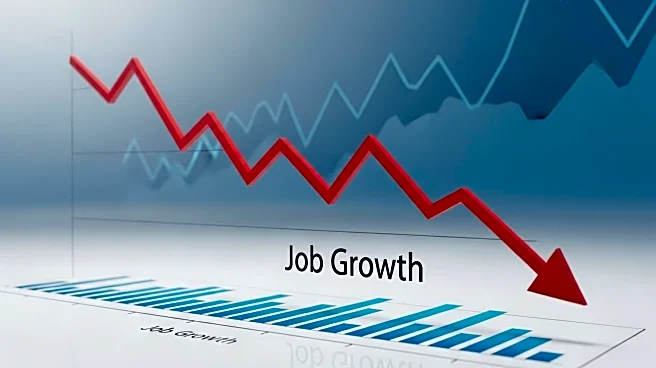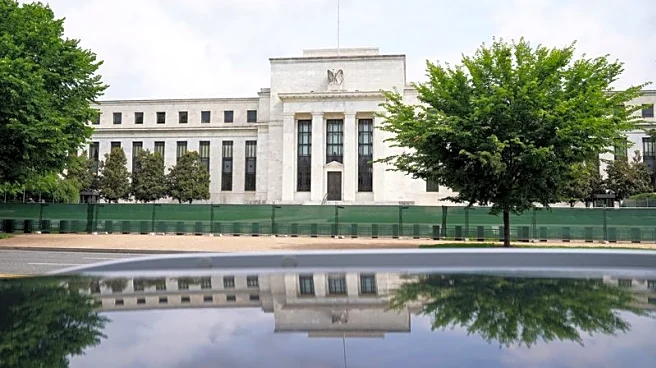What's Happening?
Recent data from the Bureau of Labor Statistics indicates a significant downward revision in U.S. job growth figures, with nearly a million fewer jobs added in the 12 months leading up to March 2025 compared to previous estimates. This revision suggests a weakening labor market, as the payroll numbers were adjusted down by 911,000 jobs. The revision is the largest on record, surpassing previous figures from March 2009 and March last year. Economists are concerned about the implications of this data, as it suggests job reductions averaging 76,000 per month over the specified period. The report has prompted discussions about the Federal Reserve's potential rate cuts, as the labor market's momentum appears to be diminishing.
Why It's Important?
The downward revision in job growth figures is significant as it raises concerns about the potential for a recession in the U.S. economy. A weakening labor market could lead to reduced consumer spending and economic slowdown. Economists like Joe Brusuelas from RSM argue that while recession odds remain low in the near term, the diminishing momentum in the labor market is a cause for concern. The Federal Reserve may face pressure to cut interest rates to stimulate economic activity. Additionally, the unemployment rate among young adults, particularly those aged 16 to 24, is at its highest since the COVID-19 pandemic, further underscoring labor market challenges.
What's Next?
The Federal Reserve may consider interest rate cuts to address the weakening labor market and prevent a potential recession. Economists and policymakers will closely monitor upcoming inflation data to assess the impact of tariffs on prices and the broader economy. The labor market's performance will be a key factor in determining future monetary policy decisions. Stakeholders, including businesses and political leaders, will likely react to these developments, as they could influence economic strategies and public policy.
Beyond the Headlines
The revision in job growth figures highlights deeper issues within the U.S. labor market, including structural changes and the impact of external factors such as tariffs and global economic conditions. The data may prompt discussions about the need for policy adjustments to support job creation and economic stability. Long-term shifts in employment patterns could affect various industries and societal dynamics, necessitating strategic planning and adaptation.












